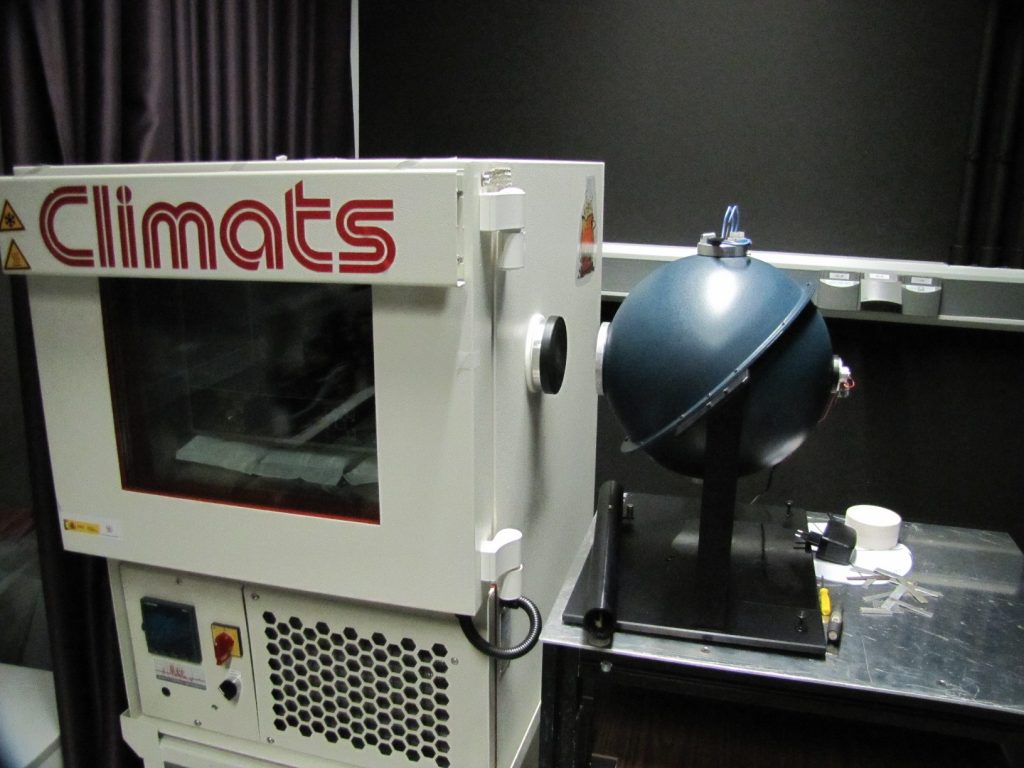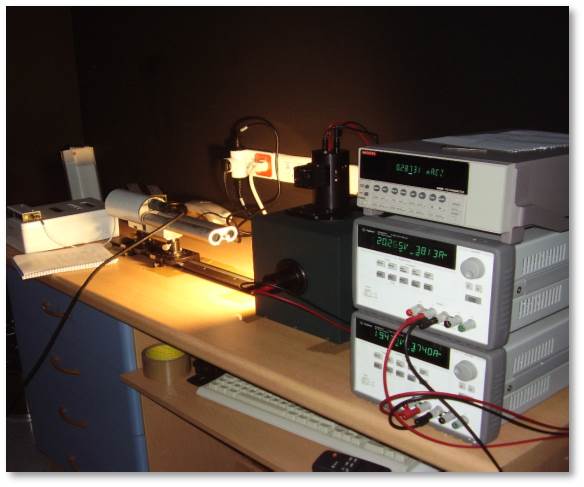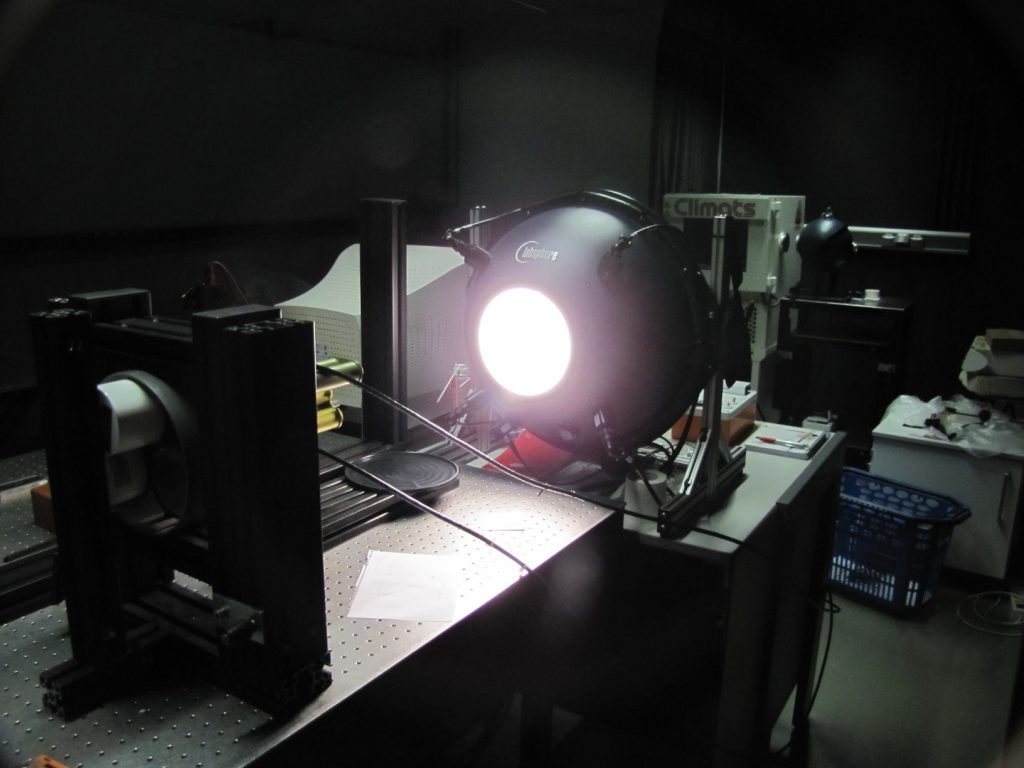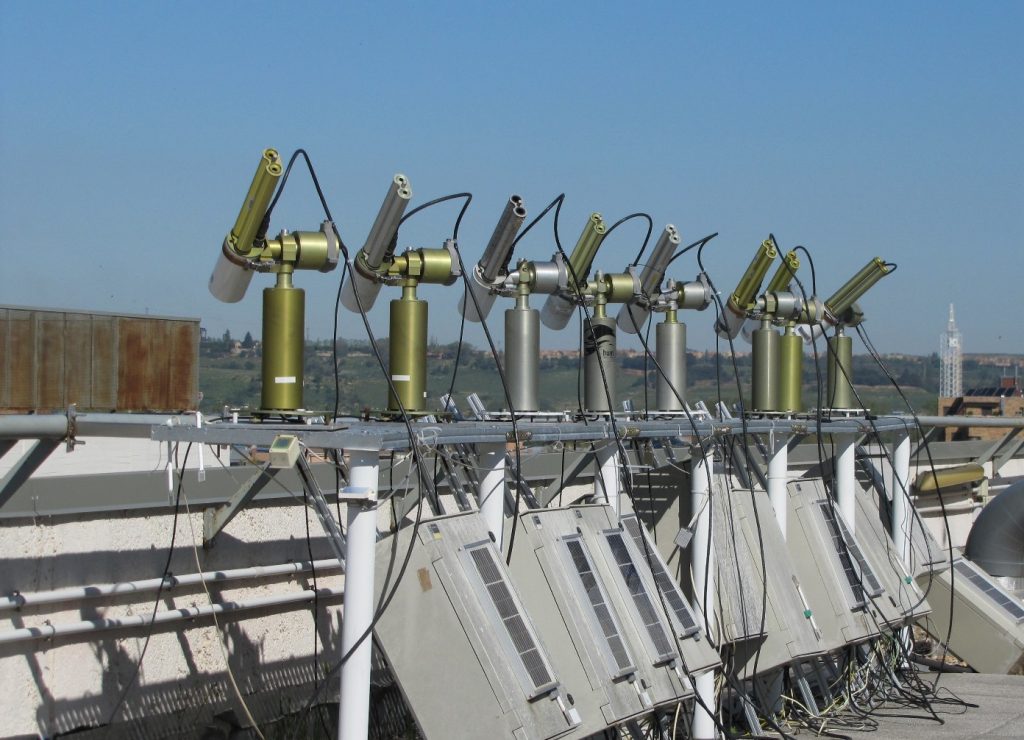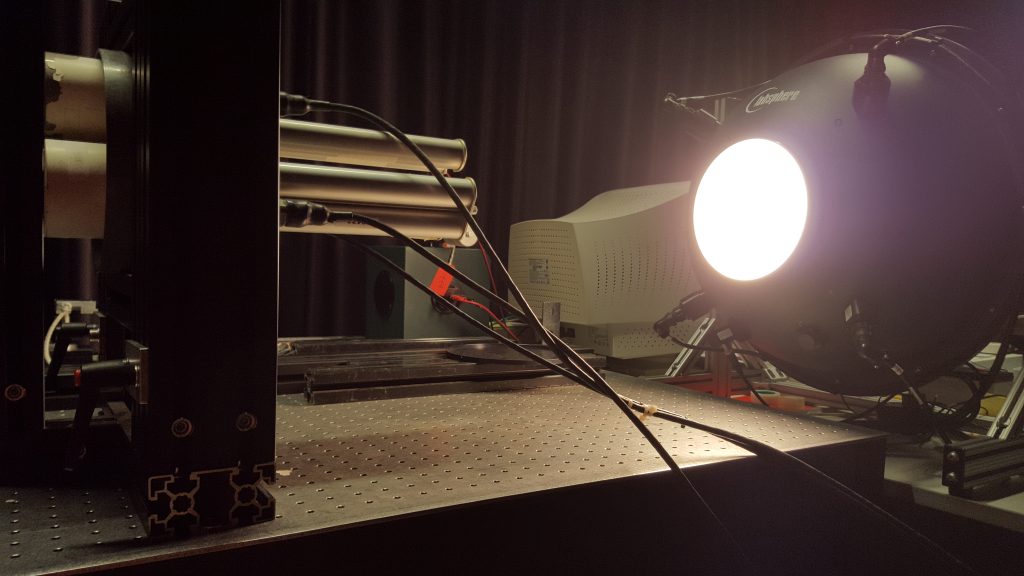The GOA Calibration Facility (CF) is an infrastructure devoted to radiometric calibrations. Our main task is the calibration of Cimel sun photometers within AERONET.
The GOA-CF was initially created for RIMA network (Red Ibérica de Medida fotométrica de Aerosoles, see History), federated to AERONET. The calibration center within AERONET is managed in close cooperation with GSFC at NASA, the University of Lille and the Izaña Atmospheric Research Center.
It is composed by an Optical Laboratory and a roof Platform in the terrace of the Science Faculty Building. The roof platform in used for solar calibrations, typically made by comparison of field instrument signals with a calibrated master instrument.
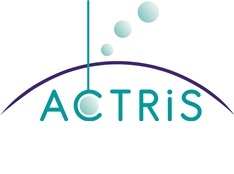
Calibration services and access
It is composed by an Optical Laboratory and a roof Platform in the terrace of the Science Faculty Building. The roof platform in used for solar calibrations, typically made by comparison of field instrument signals with a calibrated master instrument. In it, 2 calibrated master instruments are used to transfer absolute calibration to the field instruments of the network. A unique facility for calibration of master instruments is provided by AEMET at Izaña.
The laboratory for radiometric calibrations includes several systems for radiance and irradiance calibrations, maintenance and repair room, spectrometers and a thermal chamber. The laboratory is equipped with 3 integrating spheres, denoted “Asterix” (2 lamps, 8 inch diameter), “Obelix” (4 lamps, 20 inch diameter) and “Panoramix” (1 lamp, 12 inch diameter). The spheres are used for radiance absolute calibration, which is transferred from a NASA travelling master every 4 months. For irradiance calibration we have FEL lamps with NIST traceable calibration, mounted on a 2m optical bench. The thermal chamber devoted to test temperature response of instrumentation in the range -40ºC to +60ºC.
The calibration facility has received funding from regional and national projects since 2006. After 2011 it has received funding from the European Union FP7 under grant agreement No 262254 (ACTRIS project) and from Horizon 2020 research and innovation programme under grant agreement No 654109 (ACTRIS-2).
Calibration services and access
The AERONET-ACTRIS Calibration Facility provides calibration services for radiometers and photometers devoted to remote sensing of the atmospheric composition:
- Irradiance (300-2500nm spectral range).
- Radiance (380-1640nm spectral range).
- Temperature response (-40˚C to +60˚C).
- Top of the atmosphere signals for aerosol optical depth (340 to 1640nm).
- Consultancy for new stations setup and configuration.
- Consultancy for aerosol remote sensing Standard Operation Procedures.
- Traceability of aerosol optical depth to the World Radiation Center (starting 2022).
The access to calibration services is primarily established through the ACTRIS research infrastructure.
Please contact us directly by email at goacf@goa.uva.es for application procedure. It is foreseen that private users can access these services through the catalogue of the LTI-UVa (https://laboratoriotecnicasinstrumentales.es), starting 2022.

